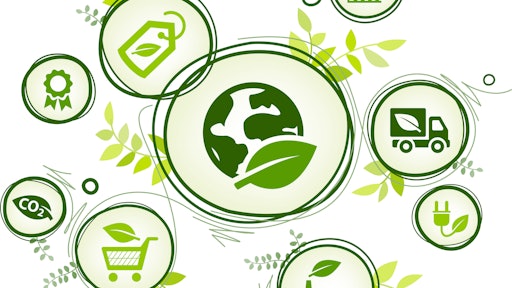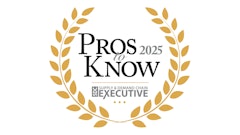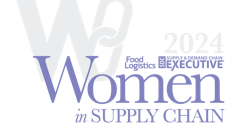
Supply chain leaders are finding they need to play an increasingly pivotal role in steering their organizations to implement more responsible operations. As regulations in global markets prioritize accurate, transparent sustainability reporting, companies must move beyond mere compliance into the realm of due diligence. At the heart of this lies the recognition that companies need a better understanding of their supply chains.
Europe’s new Corporate Sustainability Reporting Directive (CSRD) demands that companies report on their environmental and social impacts and improvements. This is a seismic shift in how organizations should approach sustainability reporting which has historically lacked definition. Within the United States, there is now an increasing emphasis on comprehensive sustainability reporting within state and federal legislations, with a particular focus on implications for supply chains. Notable instances include the Climate Corporate Data Accountability and Climate-Related Financial Risk Disclosure Acts in California which will require businesses to report GHG emissions for the first time.
These regulations collectively signal a paradigm shift, demanding that supply chain professionals operationalize transparent sustainability reporting on an unprecedented scale. Primary data from suppliers’ suppliers — notably from Tier 2 and beyond, where the majority of a business’ social and environmental impact lies — will be the linchpin, offering the comprehensive view that is key to unlocking sustainability improvements across the value chain.
View CSRD as Your Sustainability Roadmap
Today, brands juggle numerous sustainability priorities including biodiversity, water impacts, circularity, impacts on workers’ communities and more. CSRD helps businesses to prioritize their efforts, but many will need to actively manage and report progress on all of their material sustainability issues.
Approached with the right mindset, CSRD compliance can also be used as a roadmap for sustainability. CSRD explains and defines some of the most pressing ESG focus areas—and importantly, it’s built upon widely adopted international frameworks such as the UN Guiding Principles on Business and Human Rights and the OECD Due Diligence Guidance.
Businesses have an opportunity to establish themselves as leaders by setting sustainability improvement targets and gathering data in accordance with CSRD’s requirements. This will help future-proof them for other emerging regulations, putting them ahead of the curve as global reporting requirements become more pervasive and rigorous in the coming years.
Primary Data is Key
To meet these requirements, companies will need to collect data on material impacts, environmental risks and opportunities, and on the progress and improvements being made across 100 percent of their value chain. While some businesses have modeled data or estimates on some of these measures, few have consistent and verifiable primary data across all of these topics to secure a clear view of their true impact. Brands will be seeking ways to begin to disaggregate process-level factory data from representative sample material impact data for particular products.
Consider this: starting in 2026, any non-EU company operating in the EU with €20 million in total assets will have to report primary emissions data for their Tier 2 suppliers. As an example, in the apparel industry, Tier 2 suppliers are responsible for up to 53% of the industry’s total greenhouse gas emissions, according to the Apparel Impact Institute. But it's common for a brand to not even know some of these manufacturers. The bottom line is that building a primary data collection infrastructure deep in the supply chain is work that must start now because it takes time.
The smartest businesses will begin investing now in processes and tools for robust primary data collection and analysis across their entire value chains. There’s no time to lose if they are to start reporting their impact in 2025.
Use Extensible Technology to Prepare for Reporting
The new regulatory landscape presents novel challenges in reporting and data gathering, placing added strain on teams that may lack the necessary resources or staffing for seamless adaptation. And brands will have to gather this data taking into account the already inordinate burden placed on global manufacturers. Leveraging highly extensible technology tailored to streamline supply chain data collection processes is a strategic imperative. Such tools not only enhance efficiency but also mitigate the risk of human error inherent in manual data gathering methods, ensuring accuracy and reliability in supply chain reporting.
As sustainability reporting moves from voluntary to mandatory compliance, the changing regulatory landscape offers a chance to educate CEOs, peers, and colleagues on what’s needed and set up companies and their vendor partners for a new era of sustainability leadership. These regulatory mandates should be seen as more than an obligation, but rather an opportunity for supply chain leaders to drive a culture of sustainability within their organizations by aligning sustainability efforts with overarching business objectives, enhancing both environmental and operational efficiency.
Compliance hinges on more than good intentions; it requires setting ambitious improvement targets and meticulously tracking impact metrics across various facets of the supply chain. Fortunately, there are tools available that help establish a baseline, quantify data year-over-year and serve as inputs to developing goals over medium and long-term time horizons.
As companies navigate this transformative journey, the strategic investment in these tools — coupled with proactive leadership — becomes imperative for embracing these new regulations, not merely as a compliance mandate but as a catalyst for meaningful and enduring sustainability practices. Incorporating technology and data analysis platforms empowers companies to strategically invest in supply chain efficiencies that yield the most impactful and lasting results. Technology will be instrumental for going deeper into the supply chain with greater accuracy and frequency as the spotlight grows on disclosing carbon emissions, other impact areas and sourcing traceability.


























